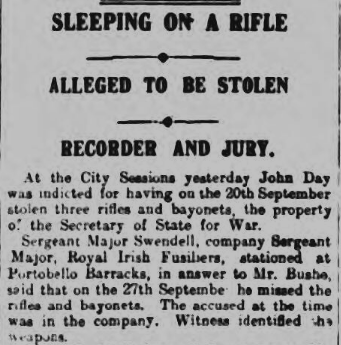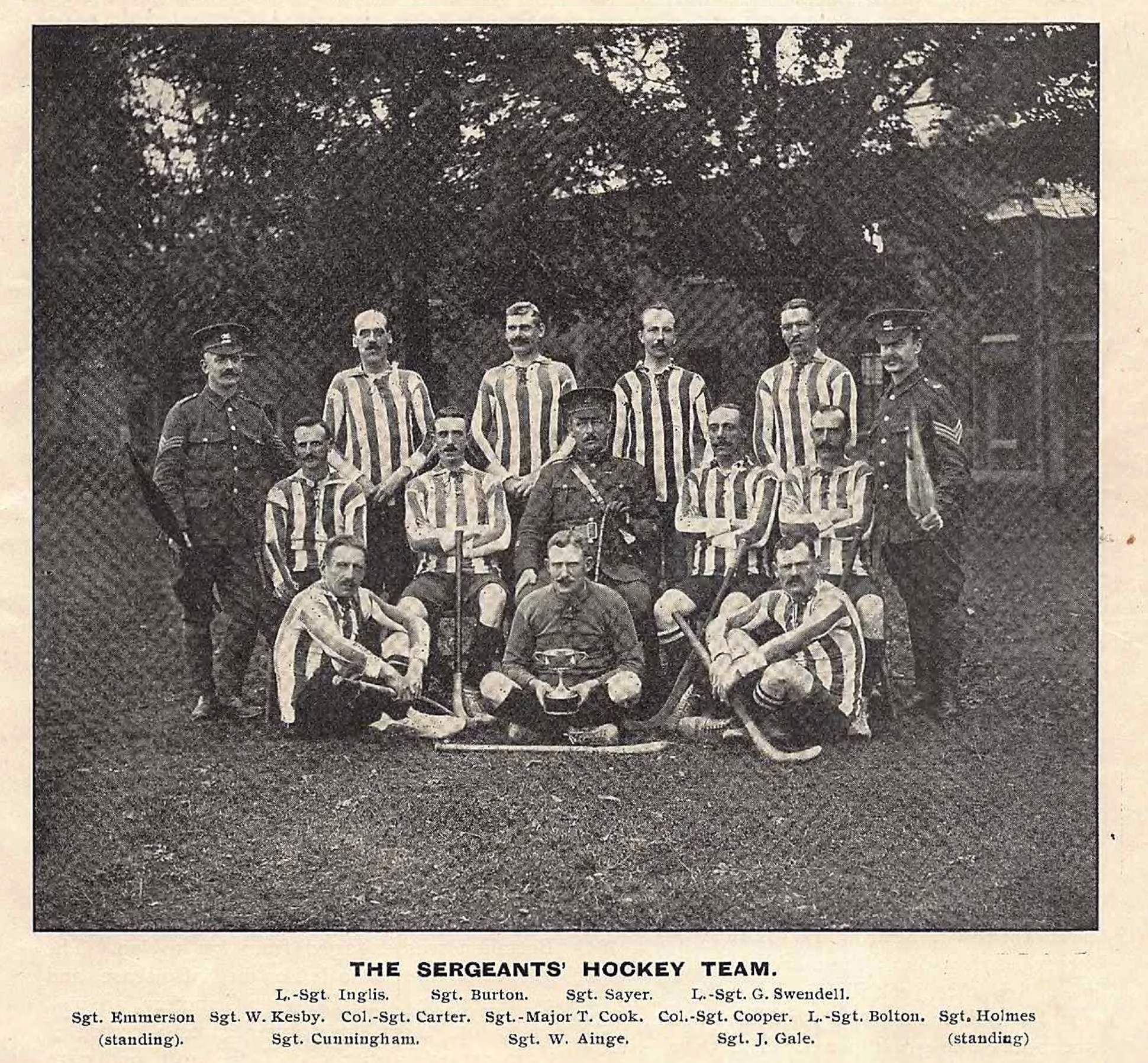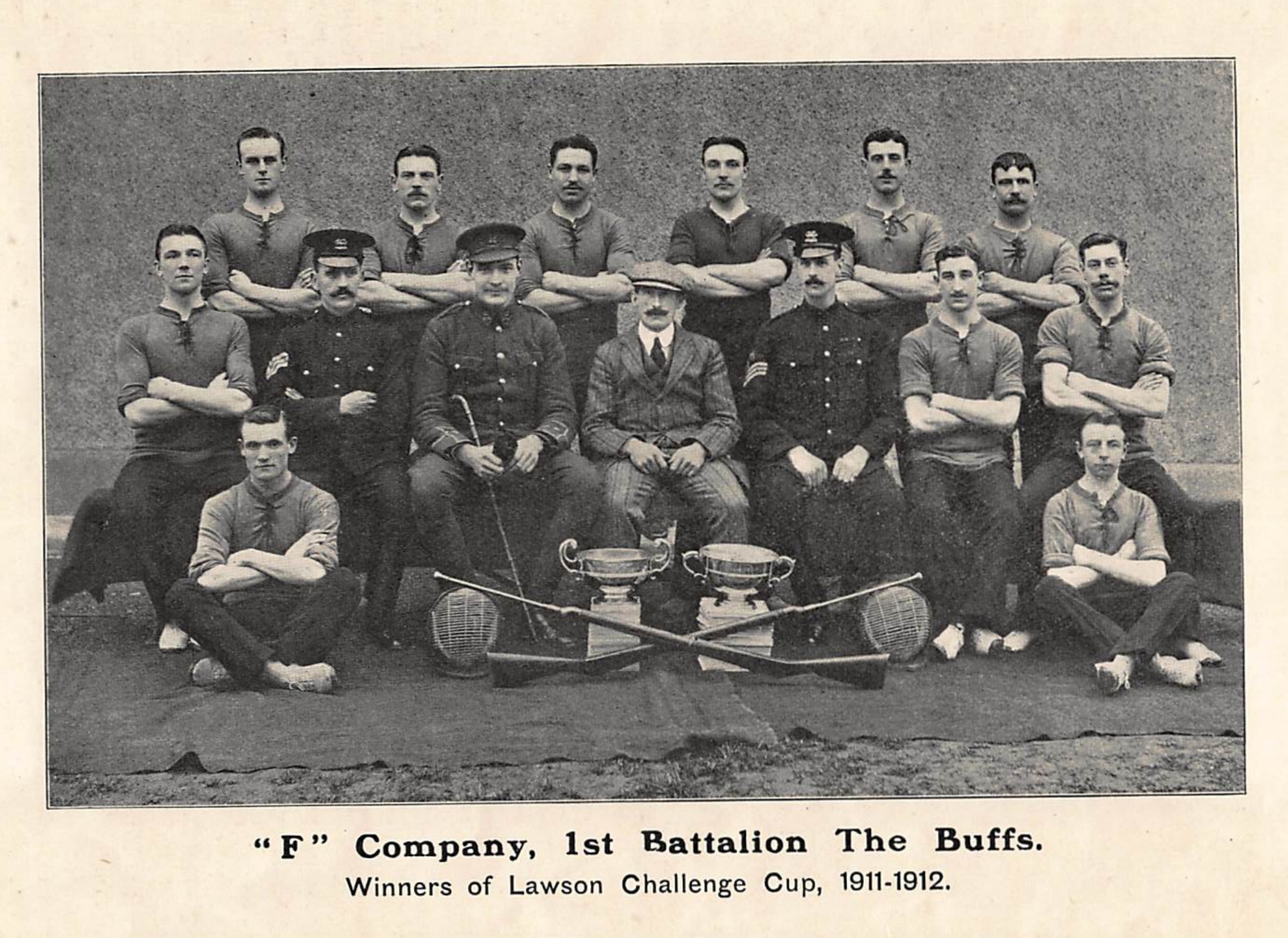George Swendell (1882 - 1915) was the youngest brother of my great granddad. Like all of his brothers he joined the army. Early on in my genealogy research I came across George. For a while I confused him with another George Swendell who had been thrown out of the army. In trying to get to the bottom of this I paid for the Royal Irish Fusilliers to send me the details that they had on him. The pack that the Royal Irish Fusilliers sent me confirmed that my family’s George Swendell hadn’t been thrown out of the army. Sadly he’d been killed at Gallopoli in 1915.
I haven’t researched George’s early life, but I have looked into the years before he died. The main reason for this was I thought there was a chance that I’d be able to find a photo of him.
When I think about the last few years of George’s life I feel somewhat sad. George had served for a long time in the army, and as I’ll describe later, he seems to have enjoyed it. Out of the four Swendell brothers his army career appears to have been the most successful since he was promoted to regimental sergeant major. George was a soldier in the Royal East Kent Regiment for 14 years. He was married to Alice Mullen in Dublin on Boxing Day 1912 with their first son, Edward John, born on the 30th of May the following year. On the 20th of April 1914 George left the army. I like to think that this was so that he could spend time with his young family in Dublin.
Following the outbreak of the First World War George was only out of the army for a few months before being recalled to the Royal Irish Fusilliers in August 1914 as one of Kitchener’s New Armies. George is mentioned in The Faugh-A-Ballagh on p19 as joining the 6th Battalion as part of the 10th (Irish) Division as a Company Sergeant Major.
It’s unclear when George was promoted to Acting Regimental Sergeant Major. However, it was after September 1914 since he is mentioned in a newspaper article regarding stolen rifles.
 Freemans Journal 13th October 1914
Freemans Journal 13th October 1914
The 6th Battalion was transferred to Basingstoke, England in April 1915 for further training.

A church service at the 10th (Irish) Division’s Basingstoke camp, 1915
In July 1915 the Division sailed from Liverpool for Gallipoli stopping at Alexandria and Mudros before landing at Suvla on the 7th of August. 8 days later George was killed on the 15th of August. The Tenth (Irish) Division in Gallipoli by Major Bryan Cooper gives a detailled description of the events that George would have been involved with. On the 27th of September Alice gave birth to George’s daughter Phyllis Mary Caroline. Phyllis may have been named after her maternal grandmother Mary and George’s elder sister Caroline.
I’m aware of two memorials that George appears on. The first is Helles Memorial in Turkey. The second is in St. Pauls church in Buttershaw, Bradford. St. Pauls was the Swendell’s church when they moved to Bradford. George was posthumously awarded the 1915 star, the British War Medal and the Allied Victory Medal.




1914-1915 Star, WWI British War Medal and Victory Medal
One of the exciting possibilities was that there was a picture of George somewhere. I thought my best bet of finding a picture was a photograph of the 6th battalion of the Royal Irish Fusilliers. As a regimental sergeant major he should be relatively easy to pick out. In hunting for pictures of the WWI era pictures of the Royal Irish Fusilliers I came across Nick Metcalfe’s website. Nick has a large collection of photographs of the Royal Irish Fusilliers and I was hopeful that he’d have one of the 6th Battalion with George in. Having contacted Nick he reviewed his Royal Irish Fusilliers pictures and couldn’t find George. However, investigating George’s earlier army career he found this picture in the Buffs regimental magazine The Dragon from October 1911.
 The Sergeants’ Hockey Team from The Dragon October 1911
The Sergeants’ Hockey Team from The Dragon October 1911
This made my day! I looked through other issues of The Dragon and found this picture in the April 1912 edition.
 Winners of the Lawson Cup from The Dragon April 1912
Winners of the Lawson Cup from The Dragon April 1912
Although there are no names listed I’m pretty sure George is third from the left in the back row. Firstly he looks to be the same man in the hockey photo and secondly he is listed as the correspondent for F company in the June 1912 edition of the Dragon.
George appears a number of times in The Dragon in a bayonent fighting competition, assistant instructor in the gymnastic school, playing cricket and a shooting competition.